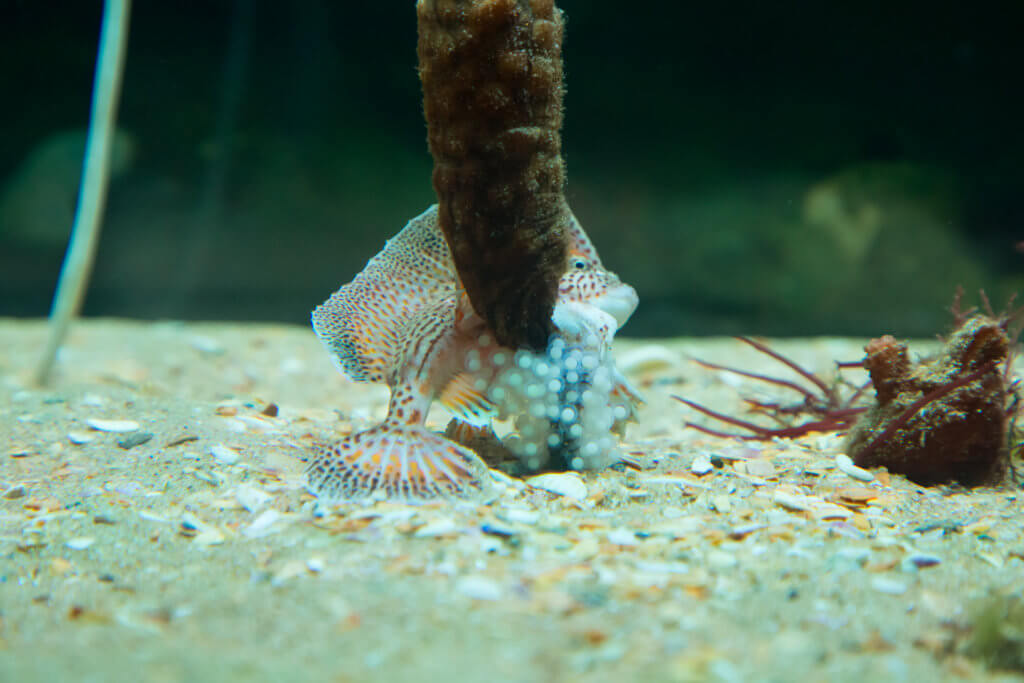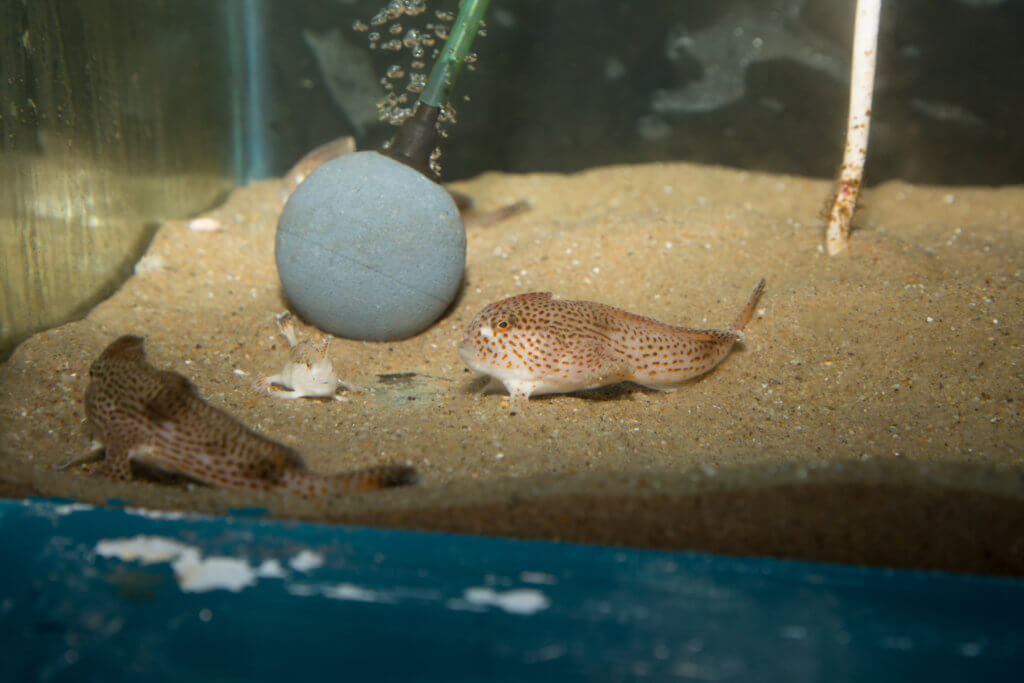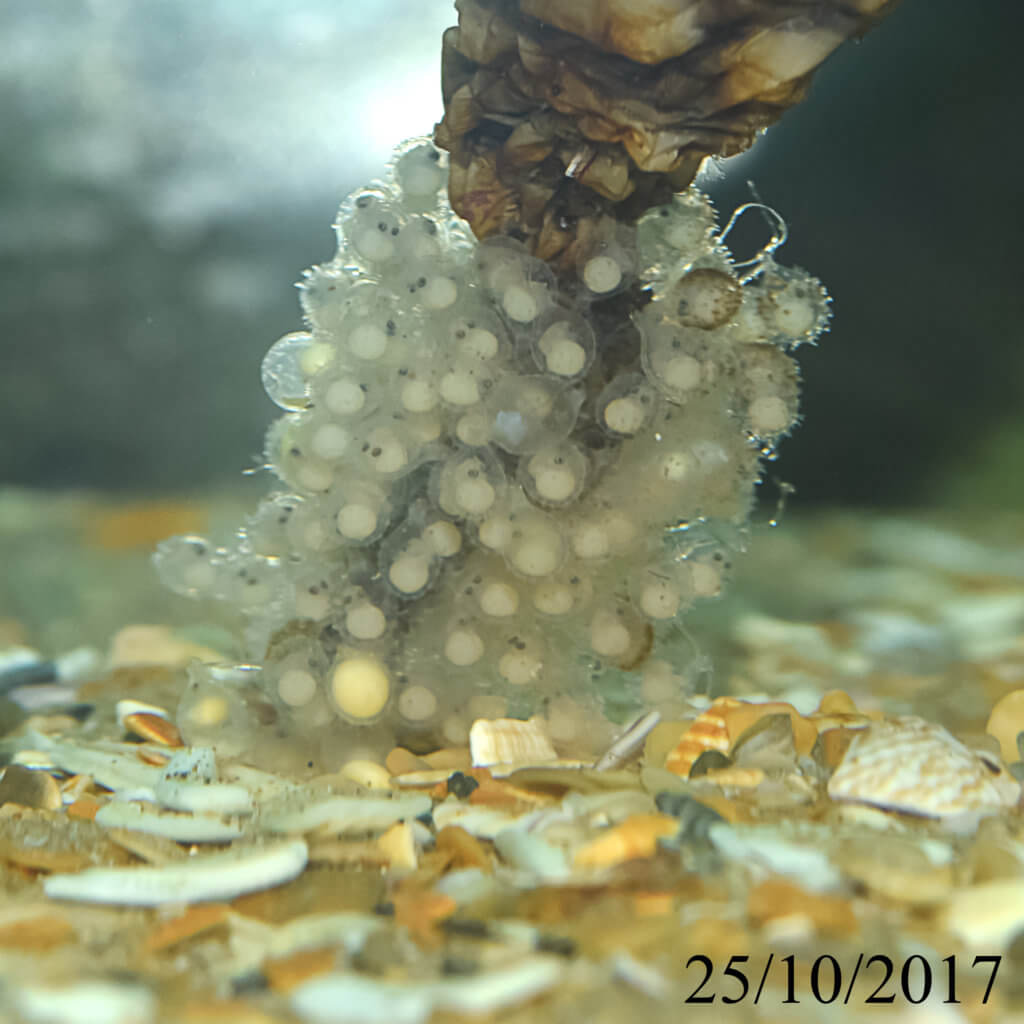We recently caught up with Carlie Devine, CSIRO as a photographer, scientific diver and research technician, to chat about her work over the years with with Spotted handfish.
Background: tell us about yourself!
I grew up in an inland town in Victoria but my family would take my two brothers and I to stay at a caravan park on the coast every summer, where we studied the rock pools intently, scrambled up the tall, yellow cliffs and surfed the rough back beach waves in Torquay.
I remember we always packed the family’s 35mm film camera into the sandy beach bag at the start of the day, it was always with us during the warmer months. Looking back at those photos of my family and I, they are very much warmed with oranges and yellows by the film of the time, and remind me of those long days in the sun, our golden heads and bodies, always covered in sand.
It wasn’t until I moved to cold-water Tasmania in 2010 that I developed an obsession with the underwater world and began my career as a CSIRO photographer and conservationist.
How did you become involved with Spotted handfish work?
I had picked up a camera again in the 2000’s and photography became my job, so when I started at CSIRO, I had the opportunity to be out in the field documenting species in the wild. Much of my work is reliant on long term visual studies that determine or define a species’ behaviour so that we can learn how best to conserve or restore population growths where they are in decline. We also look at habitat, which is a moving feast, due to climate and human behavioural changes and introduced species, so we are finding that habits are changed or destroyed very quickly now.
I started work on the Handfish project in 2015, as a photographer and SCUBA diver. Lincoln Wong, who is now a PhD candidate with the University of Tasmania and CSIRO, completed his Honours year with us, focusing on establishing a population baseline for the spotted handfish in the Derwent Estuary. We also studied their habitat preferences and the overall species-habitat relationship. Our team at CSIRO continues to study the fish, and we have also introduced conservation tactics we hope will assist to boost their declining population.
What a typical day in the field working with handfish is like?
Finding a spotted handfish is hard, I think you really need to train your eye before you start seeing them in the wild and so we like to dive every week during the winter months if the weather allows us to.
To me, every spotted handfish is important, so it’s always really exciting to see one and photograph it. I find that even though I’m looking for them for a whole 60 minutes underwater, I still get surprised when I see one. I think it’s because they like to be alone, they sit on the bottom and often don’t move, so you’re stumbling into their quiet, secret world, they could be out on an open sandy plain or hidden amongst the patterned shells and weeds – it’s pretty special.
A few years ago we started our captive breeding program, I’ll never forget that first week. Two fish were found together which is rare, even during breeding season, so they were collected and put into our tank at CSIRO. A couple of days later I witnessed what we think is the first time, a breeding event in captivity of Spotted handfish. It was an exciting time and I had my camera practically glued to the tank for the next seven weeks capturing the eggs, then eyes and eventually hands inside the eggs. Unfortunately I was at sea when the eggs eventually hatched, but it was quite a sight a few weeks later, to see these beautiful juveniles up close, not yet more than a couple of millimetres long.
Tell us a little about the artificial spawning habitats used for Spotted handfish.
Over the years we have introduced new measures for conservation, and I think the dive I like the most is planting of the artificial spawning habitat (ASH) and the subsequent survey counts of eggs and female fish.
The ASH are made up by local ceramic artist, Jane Bamford, to replicate a stalk that a handfish would normally lay their eggs on. To plant the ASH, we carry down a bag full of the ceramic sticks, along with a trowel and dig them into the bottom so that they stand upright. We plant them from August onwards, ready for the breeding season in October and we now know that the handfish love them, so we are really pleased with the initial results.
We hope to keep the Handfish conservation program running so that we can begin to record positive changes in their population numbers.
Filmed by Carlie Devine




All images by Carlie Devine